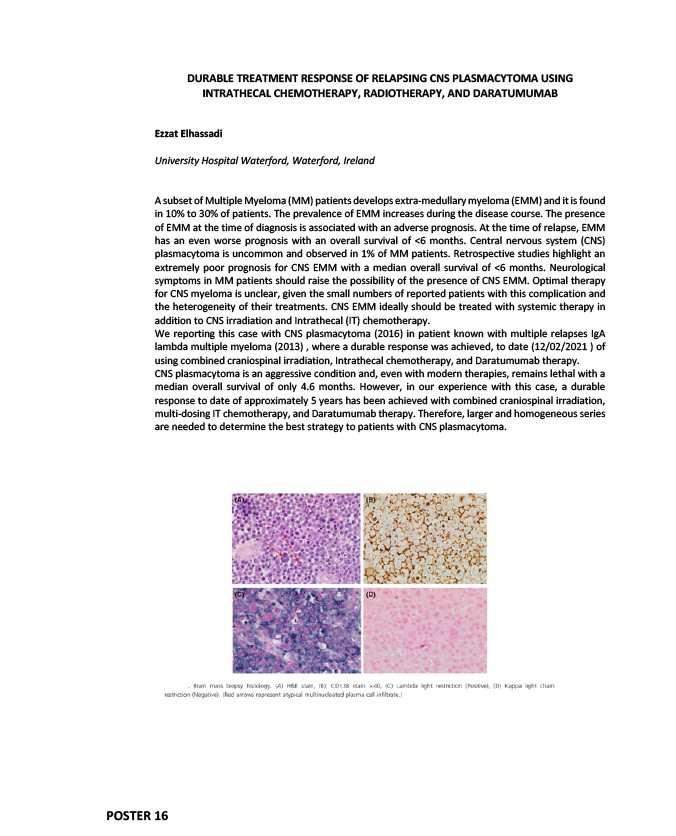
POSTER 16
DURABLE TREATMENT RESPONSE OF RELAPSING CNS PLASMACYTOMA USING
INTRATHECAL CHEMOTHERAPY, RADIOTHERAPY, AND DARATUMUMAB
Ezzat Elhassadi
University Hospital Waterford, Waterford, Ireland
A subset of Multiple Myeloma (MM) patients develops extra-medullary myeloma (EMM) and it is found
in 10% to 30% of patients. The prevalence of EMM increases during the disease course. The presence
of EMM at the time of diagnosis is associated with an adverse prognosis. At the time of relapse, EMM
has an even worse prognosis with an overall survival of <6 months. Central nervous system (CNS)
plasmacytoma is uncommon and observed in 1% of MM patients. Retrospective studies highlight an
extremely poor prognosis for CNS EMM with a median overall survival of <6 months. Neurological
symptoms in MM patients should raise the possibility of the presence of CNS EMM. Optimal therapy
for CNS myeloma is unclear, given the small numbers of reported patients with this complication and
the heterogeneity of their treatments. CNS EMM ideally should be treated with systemic therapy in
addition to CNS irradiation and Intrathecal (IT) chemotherapy.
We reporting this case with CNS plasmacytoma (2016) in patient known with multiple relapses IgA
lambda multiple myeloma (2013) , where a durable response was achieved, to date (12/02/2021 ) of
using combined craniospinal irradiation, Intrathecal chemotherapy, and Daratumumab therapy.
CNS plasmacytoma is an aggressive condition and, even with modern therapies, remains lethal with a
median overall survival of only 4.6 months. However, in our experience with this case, a durable
response to date of approximately 5 years has been achieved with combined craniospinal irradiation,
multi-dosing IT chemotherapy, and Daratumumab therapy. Therefore, larger and homogeneous series
are needed to determine the best strategy to patients with CNS plasmacytoma.